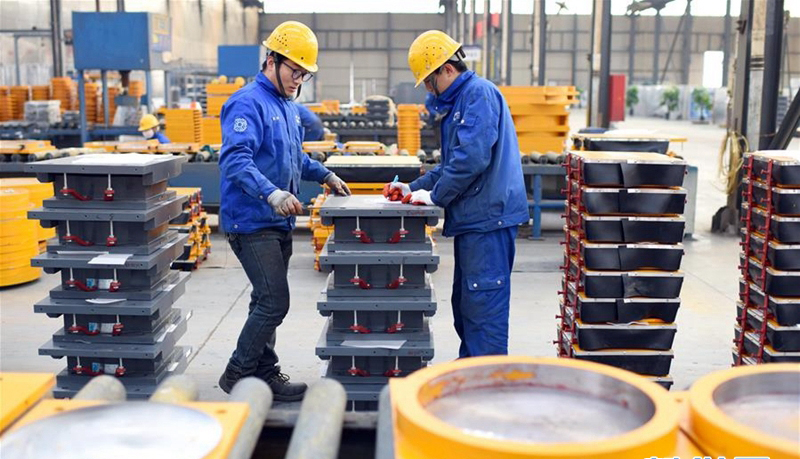Development of ‘B&R’ requires intensive, meticulous efforts

Quality inspection personnel of a rubber products company check the quality of products at the High-tech Zone in Hengshui, Hebei Province on Dec. 20, 2017. With the promotion of the “Belt and Road” initiative, the industry of engineering rubber in Hengshui has met new development opportunities. Products from over 20 enterprises are exported to such countries as Indonesia, Iran and Kazakhstan.
The year 2018 marks the fifth anniversary of the launch of the “Belt and Road” initiative. The Symposium on the “B&R” Initiative and China’s Future Developmental Strategy was held in Beijing on March 25 to reflect on the achievements and lessons learned in promoting the initiative in the past five years.
The host of the symposium, Chongyang Institute for Financial Studies under Renmin University of China, released a Research Report on the Strategic Map of the “B&R” Initiative at the symposium.
According to the map, rapid progress is being made on infrastructure construction projects in the New Eurasian Land Bridge, the China-Indochina Peninsula, the China-Mongolia-Russia and the China-Pakistan economic corridors while interconnectivity on the Eurasian continent has improved remarkably.
Zhao Lei, a professor from the Institute for International Strategic Studies at the CPC Central Party School, illustrated the “sense of gain” that the initiative has brought to the people in the countries along its proposed routes. The railway mileage in Laos was only 3.5 kilometers in the past. The China-Laos Railway, which is under construction, will span more than 400 kilometers, Zhao said. For the people of Laos, it is a drastic change, he added.
The “B&R” initiative will greatly alter the structure of global markets. Huang Renwei, executive deputy director of the Fudan Institute of the Belt & Road and Global Governance, said that the places where those economic corridors, railways, ports and the pipelines of oil and gas intersect will likely become new traffic hubs, industrial centers and financial centers.
More intensive and meticulous efforts are required to further steadily advance the “B&R” initiative. Ou Xiaoli, director of the Department of Social Development at the National Development and Reform Commission, said that pushing forward the initiative requires a transformation of attention from a general picture to individual projects. The individual projects demand more meticulous work and craftsmanship as well as carefulness and patience, he said.
Jin Xin, director of the China Center for Contemporary World Studies under the International Department of the Central Committee of the CPC, said that new dimensions of interactive development of China and Western countries should be created. And the interactive development inside China and abroad should also be created, he said. Aligning the initiative with China’s domestic regional development strategies, including the Guangdong-Hong Kong-Macao Greater Bay Area, is an important task that should be accomplished next, he said.
In addition, China’s inland provinces should be mobilized to participate in the initiative, Jin said. Considering that the sizes of economy of some countries along the proposed routes of the initiative are roughly equivalent to some Chinese provinces, it would be more favorable to promote cooperation between China’s provinces and these countries so that more accurate arrangements and coordination can be made, he said.
Mobilizing a large amount of capital at a low cost has been one of the toughest challenges in promoting the “B&R” initiative. Liu Ping, director of the Counselor’s Office of the People’s Bank of China, said that the initiative requires the support of a pluralistic financial system. Based on marketization, China should make full use of its advantages in terms of geography, cost, size and matching system, and supporting policy, she said.
(edited by YANG XUE)
